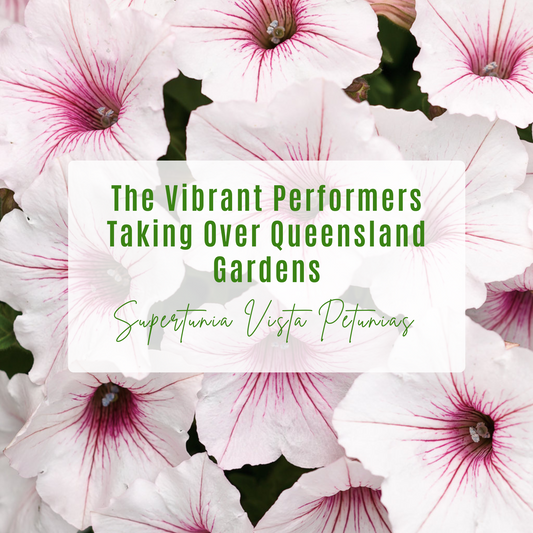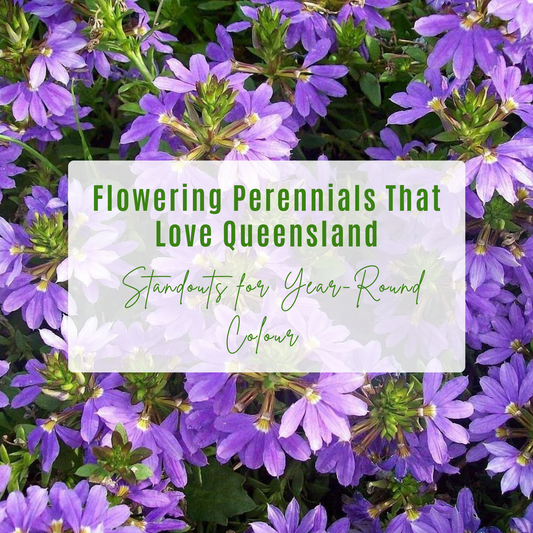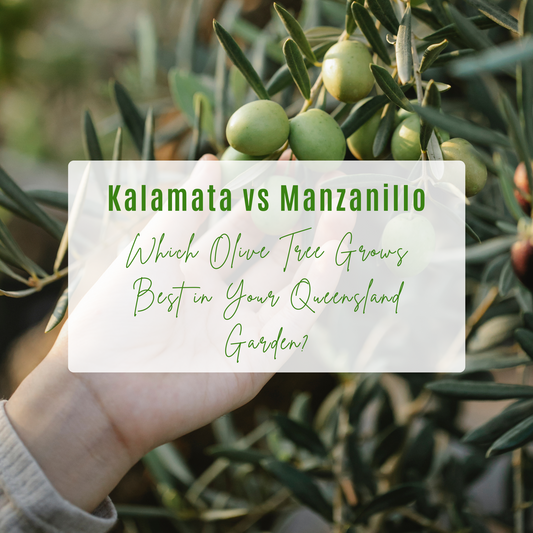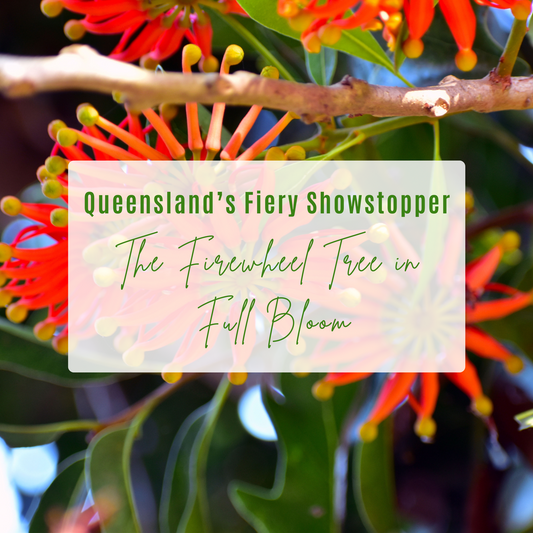
Are you looking to add Queensland native plants to your garden? Native plants are perfect for Queensland’s climate, as they thrive with minimal care and provide essential habitat for local wildlife. This guide will introduce you to the top Queensland native plants that are easy to grow, drought-tolerant, and beautiful additions to any garden.
1. Acronychia imperforata (Fraser Island Apple)
A hardy, salt-tolerant shrub or small tree with glossy green leaves and small white flowers. The edible fruit attracts birds and other wildlife.
Ideal Growing Conditions: Thrives in full sun to part shade with well-drained soil.
Uses: Perfect for coastal gardens, screening, and feature planting.
2. Backhousia citriodora (Lemon Myrtle)
Famous for its fragrant, lemon-scented leaves and clusters of creamy white flowers, this is a great edible and ornamental plant.
Ideal Growing Conditions: Prefers full sun to part shade and regular watering during establishment.
Uses: Works well as a hedge, specimen plant, or in herb gardens.
3. Brachychiton acerifolius (Illawarra Flame Tree)
A striking deciduous tree known for its vibrant red, bell-shaped flowers, creating a stunning feature in larger gardens.
Ideal Growing Conditions: Grows best in full sun with well-drained soil. Drought-tolerant once established.
Uses: A statement tree for parks, streetscapes, and large gardens.
4. Callistemon viminalis (Weeping Bottlebrush)
A beautiful tree with weeping branches and red bottlebrush flowers that attract birds and pollinators.
Ideal Growing Conditions: Thrives in full sun and adapts to various soil types, including wet areas.
Uses: Ideal for screening, hedging, and feature planting.
5. Syzygium australe (Bush Cherry)
An evergreen shrub with dense foliage, fluffy white flowers, and edible red berries. A fast-growing option for privacy.
Ideal Growing Conditions: Prefers full sun to part shade with well-drained soil.
Uses: Great for hedging, screening, and edible gardens.
6. Melaleuca quinquenervia (Broad-Leaved Paperbark)
A hardy tree with textured paper-like bark and creamy bottlebrush flowers. A fantastic habitat tree for native wildlife.
Ideal Growing Conditions: Thrives in full sun and tolerates wet soils. Drought-hardy once established.
Uses: Perfect for wetlands, large gardens, and parks.
7. Xanthorrhoea johnsonii (Grass Tree)
A unique Australian native with a blackened trunk and striking grass-like foliage. Adds a bold architectural element to any landscape.
Ideal Growing Conditions: Prefers full sun and well-drained soils. Drought-tolerant and low-maintenance.
Uses: Ideal as a feature plant in native and modern gardens.
8. Lomandra longifolia (Spiny-Headed Mat-Rush)
A tough, grass-like plant with fragrant, cream-colored flowers. Excellent for erosion control and mass planting.
Ideal Growing Conditions: Adaptable to a range of soil types and light conditions. Drought and frost-tolerant.
Uses: Great for borders, mass planting, and revegetation projects.
9. Grevillea (Robyn Gordon)
A stunning hybrid grevillea with fine, fern-like foliage and striking red flowers that bloom all year round.
Ideal Growing Conditions: Thrives in full sun with well-drained soils.
Uses: Attracts birds and bees, perfect for native gardens and low-maintenance landscapes.
10. Banksia integrifolia (Coastal Banksia)
A hardy, salt-tolerant tree with long, green foliage and large yellow flowers that attract birds.
Ideal Growing Conditions: Prefers full sun and well-drained, sandy soil.
Uses: Great for coastal gardens, windbreaks, and attracting wildlife.
Why Choose Queensland Native Plants?
Choosing Queensland native plants offers numerous benefits, including water conservation, low-maintenance care and support for local wildlife. These plants are adapted to the region's climate, so they require less water, fertiliser and pesticides than non-native varieties. By incorporating these plants into your garden, you’ll create a thriving, sustainable space that’s beautiful and eco-friendly.




